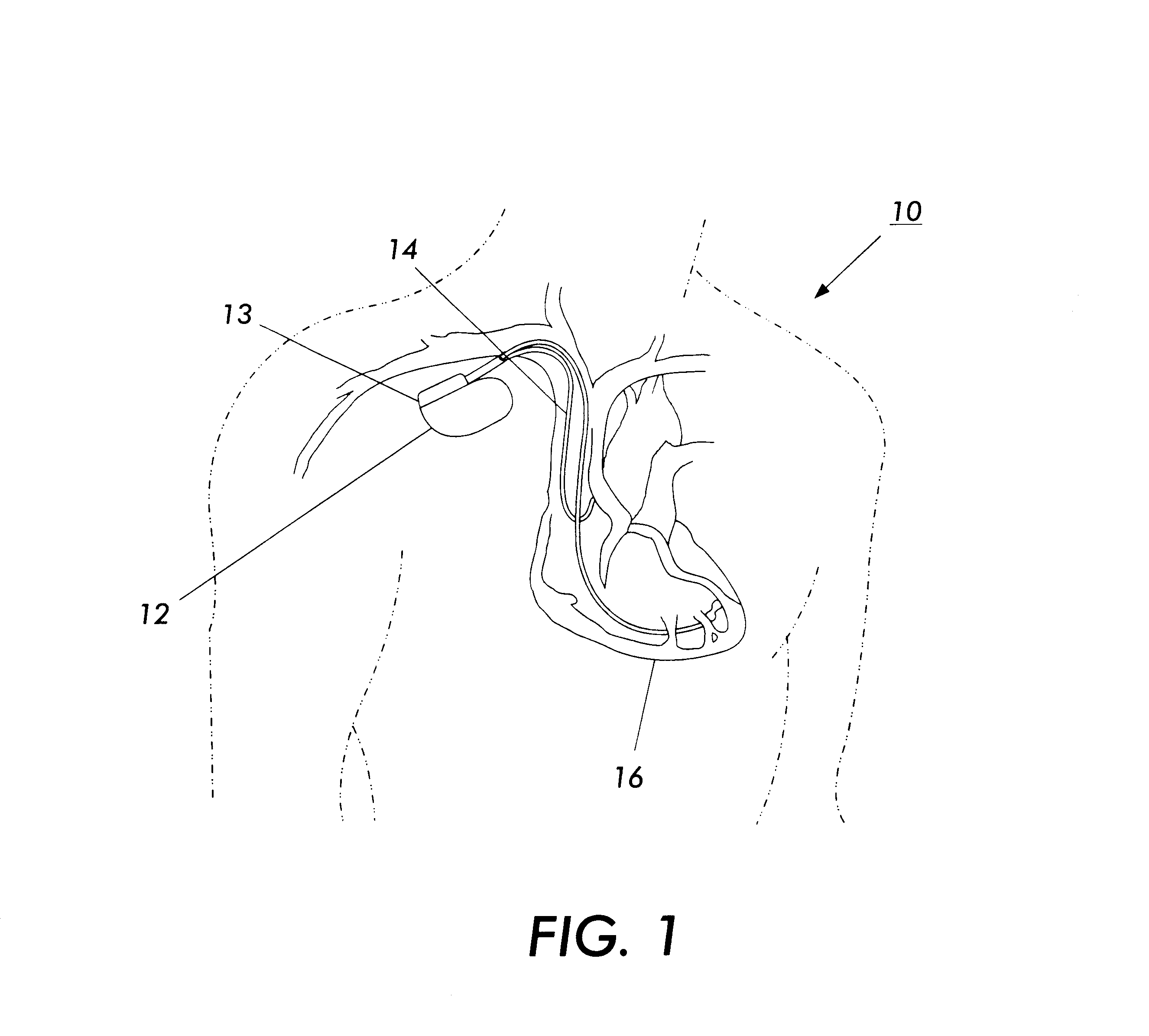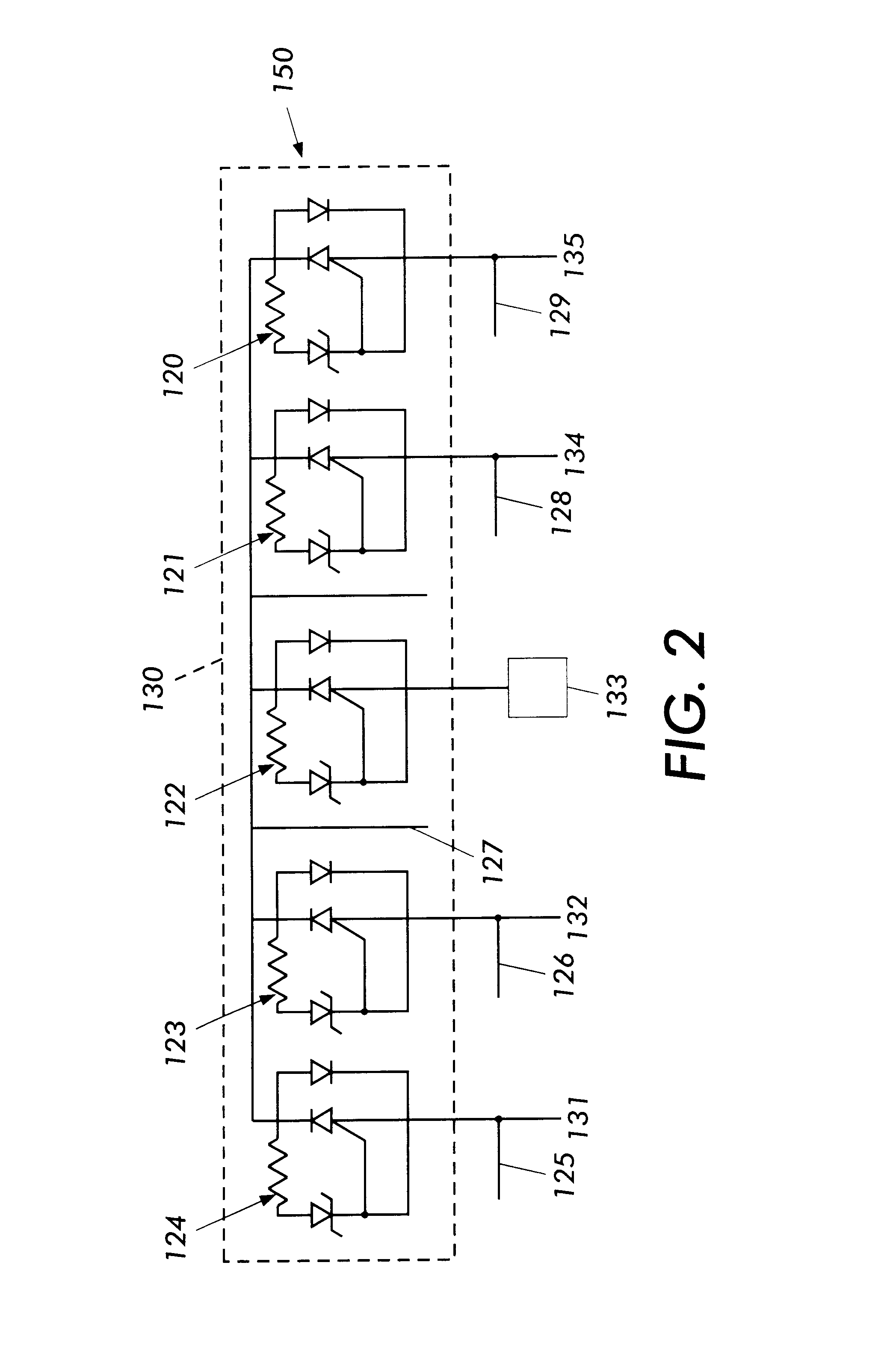Electromagnetic radiation immune medical assist device adapter
a technology of electromagnetic radiation and medical assist device, which is applied in the direction of electrotherapy, heart stimulators, therapy, etc., can solve the problems of impaired desired functionality of the pacemaker, devices are vulnerable to external sources of severe electromagnetic noise, and interfere with the proper stimulation of the heart of a patient's heart with an external pacer implanted
- Summary
- Abstract
- Description
- Claims
- Application Information
AI Technical Summary
Problems solved by technology
Method used
Image
Examples
Embodiment Construction
For the purposes of the description below and the appended claims, the term, medical assist device, refers to any device that may enable monitoring of living tissue(s) or living system(s) wherein the monitoring may be, but not limited to an EKG signal, an ECG signal, a glucose level, hormone level, or cholesterol level. The medical assist device may also enable stimulus intervention to provide assistance to living tissue(s) or living system(s) so that the stimulus causes the selected body tissue or system to function as desired. The stimulus may be, but not limited to, a cardiac stimulating substance or electrical pulse, a blood thinning substance, insulin, estrogen, progesterone, or testosterone. Furthermore, the medical assist device may be implanted in a body cavity of a living organism, either. temporarily or permanently, or subcutaneously implanted into a living organism either temporarily or permanently. Moreover, the medical assist device may be located external to the living...
PUM
 Login to View More
Login to View More Abstract
Description
Claims
Application Information
 Login to View More
Login to View More - R&D
- Intellectual Property
- Life Sciences
- Materials
- Tech Scout
- Unparalleled Data Quality
- Higher Quality Content
- 60% Fewer Hallucinations
Browse by: Latest US Patents, China's latest patents, Technical Efficacy Thesaurus, Application Domain, Technology Topic, Popular Technical Reports.
© 2025 PatSnap. All rights reserved.Legal|Privacy policy|Modern Slavery Act Transparency Statement|Sitemap|About US| Contact US: help@patsnap.com



